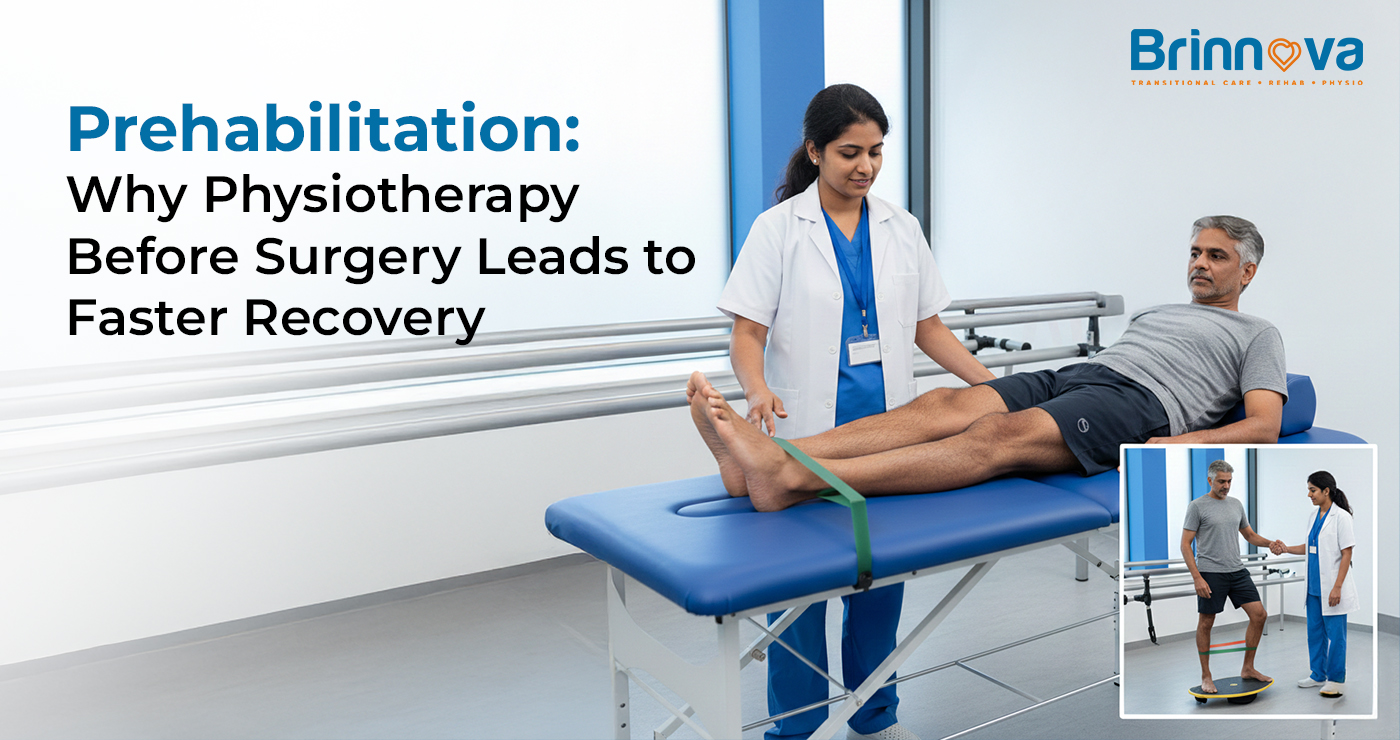Types of Physiotherapy: Benefits, Uses, and When to Begin Treatment
Several people need physiotherapy treatment to recover from diseases and injuries, along with ailments that affect their ability to move. The various types of physiotherapy exist to treat different parts of the body and improve overall healing mechanisms. Your understanding of different types of physiotherapy will lead you to select the correct treatment that matches your health requirements, whether you need to recover from injury, manage a condition or enhance your mobility.
What are the Different Types of Physiotherapy?
The various branches of physiotherapy work to resolve particular health problems. The following list represents the well-known types of physiotherapy treatment:
1. Orthopaedic Physiotherapy
The purpose of orthopaedic physiotherapy focuses on helping patients recover from musculoskeletal issues that involve fractures, sprains, and strains, as well as joint pain. The therapy method concentrates on treating bones, muscles, ligaments and tendons as well.
Common conditions treated:
- Sports injuries
- Post-surgical rehabilitation
- Back pain
- Arhtritis
2. Neurological Physiotherapy
Through neurological physiotherapy, patients receive treatment for nervous system disorders, which include strokes, together with multiple sclerosis and Parkinson's disease, as well as spinal cord injuries.
Common conditions treated:
- Stroke recovery
- Parkinson’s disease
- Traumatic brain injury
3. Cardiopulmonary Physiotherapy
Heart and lung patients receive the most benefit from this particular form of physiotherapy. The therapy provides specific exercises specially made to achieve better heart and lung function, so people who have undergone surgery or illness can strengthen their bodies after recovery.
Common conditions treated:
- Chronic obstructive pulmonary disease (COPD)
- Heart surgery recovery
- Asthma
4. Pediatric Physiotherapy
The specific area of practice in paediatric physiotherapy involves working with children who have developmental issues and neuromuscular and musculoskeletal concerns.
Common conditions treated:
- Developmental delays
- Cerebral palsy
- Postural issues
a. Geriatric Physiotherapy
The body experiences different modifications during the ageing process that impact mobility, together with overall functionality. Geriatric physiotherapy works to assist elderly individuals while helping them move with ease while controlling their pain, and getting support to avoid tripping.
Common conditions treated:
- Osteoarthritis
- Hip and knee replacement rehabilitation
- Balance problems
What Are the Benefits of Physiotherapy?
Physiotherapy has numerous advantages that enhance patients' quality of life and well-being. Several main benefits exist, which are summarised in the following list:
- Pain Management: A thorough pain management process through physiotherapy leads to both pain reduction and pain management following surgical procedures and injuries.
- Improved Mobility and Function: Physiotherapy enhances functional abilities by treating injured and surgical patients to improve their movement, leading to better functionality.
- Injury Prevention: Physiotherapists instruct people with specific exercises along with preventive techniques to minimise future injuries, but especially for athletes with injury backgrounds.
- Post-Surgery Recovery: The healing process, movement recovery, and strength enhancement become faster following surgery through the implementation of physiotherapy treatment.
- Chronic Condition Management: People with arthritis or back pain can benefit from physiotherapy because it allows symptom control and lasting improvements in their function.
- Enhanced Strength and Endurance: The specific exercises of physiotherapy focus on increasing both muscle strength and endurance, aside from improving general fitness abilities.
When Should You Begin Physiotherapy Treatment?
Starting treatment becomes difficult since you face uncertainty regarding the need for physiotherapy services. There are specific medical circumstances which strongly indicate the need for physiotherapy treatment.
1. After Surgery
You will need physiotherapy during recovery from surgical procedures that include joint replacement or spinal surgery. Speedy recovery, together with decreased postoperative complications, emerges as a direct result of early intervention.
2. Following an Injury
Sprains and strains, along with fractures, can use physiotherapy treatment to achieve proper healing in combination with the recovery of lost function.
3. Chronic Pain or Discomfort
Physiotherapy proves useful for managing ongoing conditions that include back pain alongside arthritis and tendonitis, while working to stop their progression.
4. Decreased Range of Motion
Physiotherapy acts as a treatment method to restore full movement in joints and muscles when either the full range of motion becomes impossible or when daily functioning gets restricted.
What is a Physiotherapy Treatment List?
A physiotherapy treatment list contains all the interventions which physiotherapists employ to treat particular medical conditions. Physiotherapy treatments depend on the specific therapy, yet encompass the following practices:
- Manual Therapy: Physiotherapy contains manual therapy techniques that require the therapist's hand movements to adjust joint structures with soft tissues for better mobility and pain relief.
- Exercise Therapy: Physiotherapists use specific exercise plans to strengthen medical patients while developing flexibility and mobility, particularly during rehabilitation periods.
- Electrotherapy: The administration of electrical devices supports muscle activation for pain management and therapeutic outcomes.
- Heat and Cold Therapy: It is the use of temperature applications to decrease swelling and relax muscles.
- Ultrasound Therapy: The healing benefits of tissues and deep structures come from using sound waves through ultrasound therapy.
How Can Physiotherapy Help with Rehabilitation?
The rehabilitation process depends heavily on physiotherapy, particularly among patients recovering from injuries, surgical operations and illnesses. The goal of this approach includes restoring physical abilities together with pain reduction and quality-of-life enhancement. Physiotherapy utilises different healing strategies to address actual physical restrictions, thereby allowing people to restore freedom and movement abilities.
A physiotherapist consultation should be your first step when recovering from an injury or condition that affects your movement potential. A physiotherapist establishes individual therapy plans to use exercise and therapeutic techniques for maximising your recovery outcomes.
Brinnova: The Best Rehabilitation Centre in Hyderabad
At Brinnova Care, we understand the importance of tailored physiotherapy to support your recovery journey. Whether you’re managing chronic pain, recovering from surgery, or working to enhance your mobility, our expert team is here to guide you every step of the way.
We offer many types of physiotherapy designed to restore your strength, improve your mobility, and enhance your quality of life. With personalized treatment plans, we focus on providing the most effective solutions for your specific needs, ensuring you achieve the best possible recovery outcomes.




